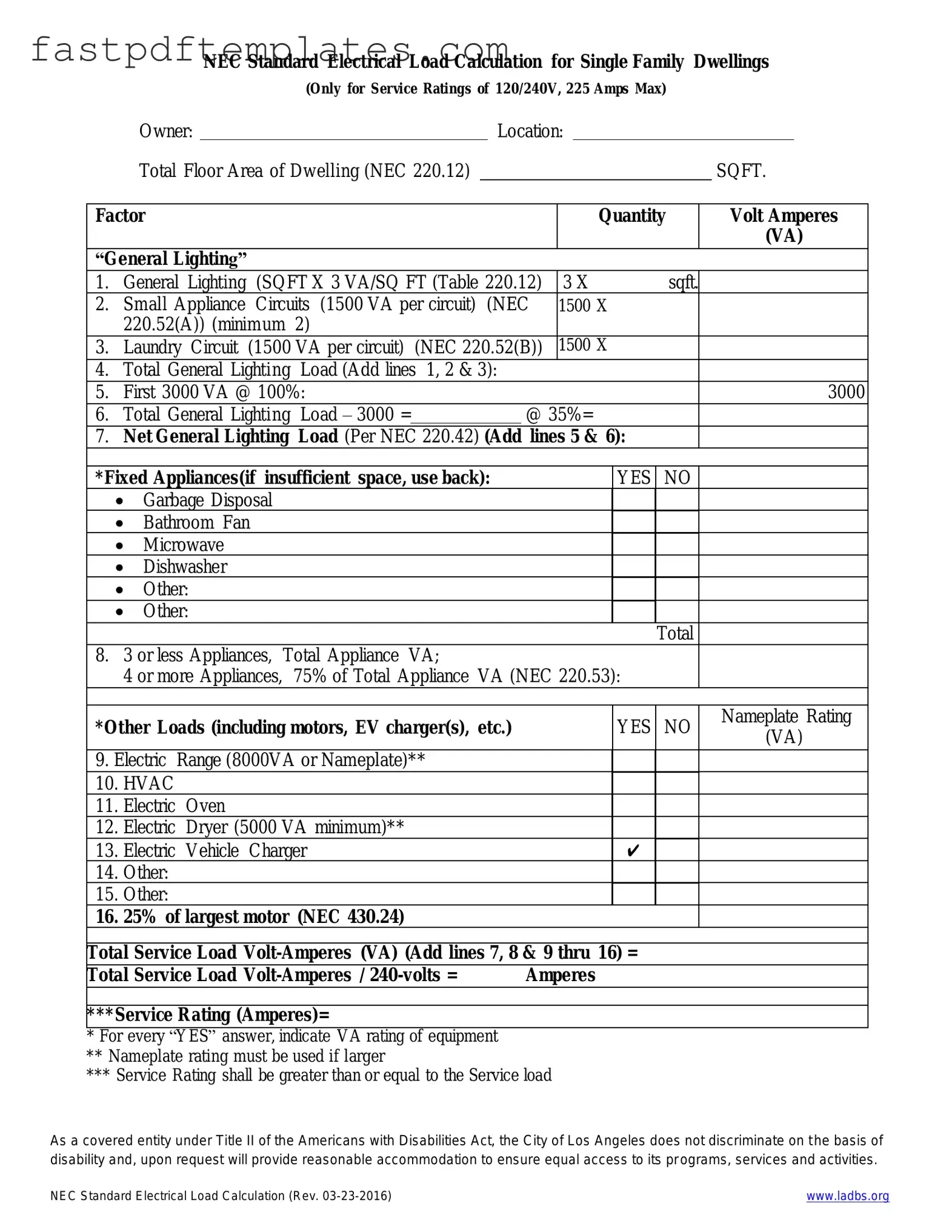The LADBS NEC Standard Electrical Load Calculation form serves a specific purpose in determining the electrical load requirements for buildings. A similar document is the National Electrical Code (NEC) load calculation worksheet. This worksheet provides a systematic approach to calculating the load based on the NEC guidelines. Both documents require detailed information about the electrical systems, including the number of circuits, types of appliances, and overall building usage, ensuring compliance with safety standards.
Another comparable document is the Residential Load Calculation form, often used by electricians and contractors. This form focuses on residential properties and outlines the necessary calculations for determining the electrical service size. Like the LADBS form, it emphasizes accurate assessments of various electrical loads, such as lighting, heating, and cooling systems, ensuring that residential electrical systems are safe and efficient.
The Commercial Load Calculation form also shares similarities with the LADBS NEC form. Designed for commercial properties, this document assesses the electrical load based on business-specific requirements. Both forms require detailed input about equipment and usage patterns, allowing for a comprehensive evaluation of electrical needs tailored to the type of business operating in the space.
The Electrical Service Load Calculation form is another document that aligns closely with the LADBS NEC form. This form focuses on the total load that an electrical service must support. It includes calculations for continuous and non-continuous loads, similar to the LADBS form, which ensures that the electrical service is adequately sized to handle peak demands without risking overload.
The Generator Load Calculation form is also relevant when discussing similar documents. This form is used to determine the appropriate generator size needed to support a building's electrical load. Both the generator and the LADBS forms require a breakdown of loads and usage patterns, ensuring that the generator can adequately support the building's electrical needs during outages or peak demand periods.
Lastly, the Power Demand Calculation form is akin to the LADBS NEC Standard Electrical Load Calculation form. This document assesses the maximum demand for power in a facility, factoring in various electrical loads and their operational schedules. Like the LADBS form, it is crucial for ensuring that the electrical infrastructure can handle anticipated power demands while remaining compliant with safety regulations.

